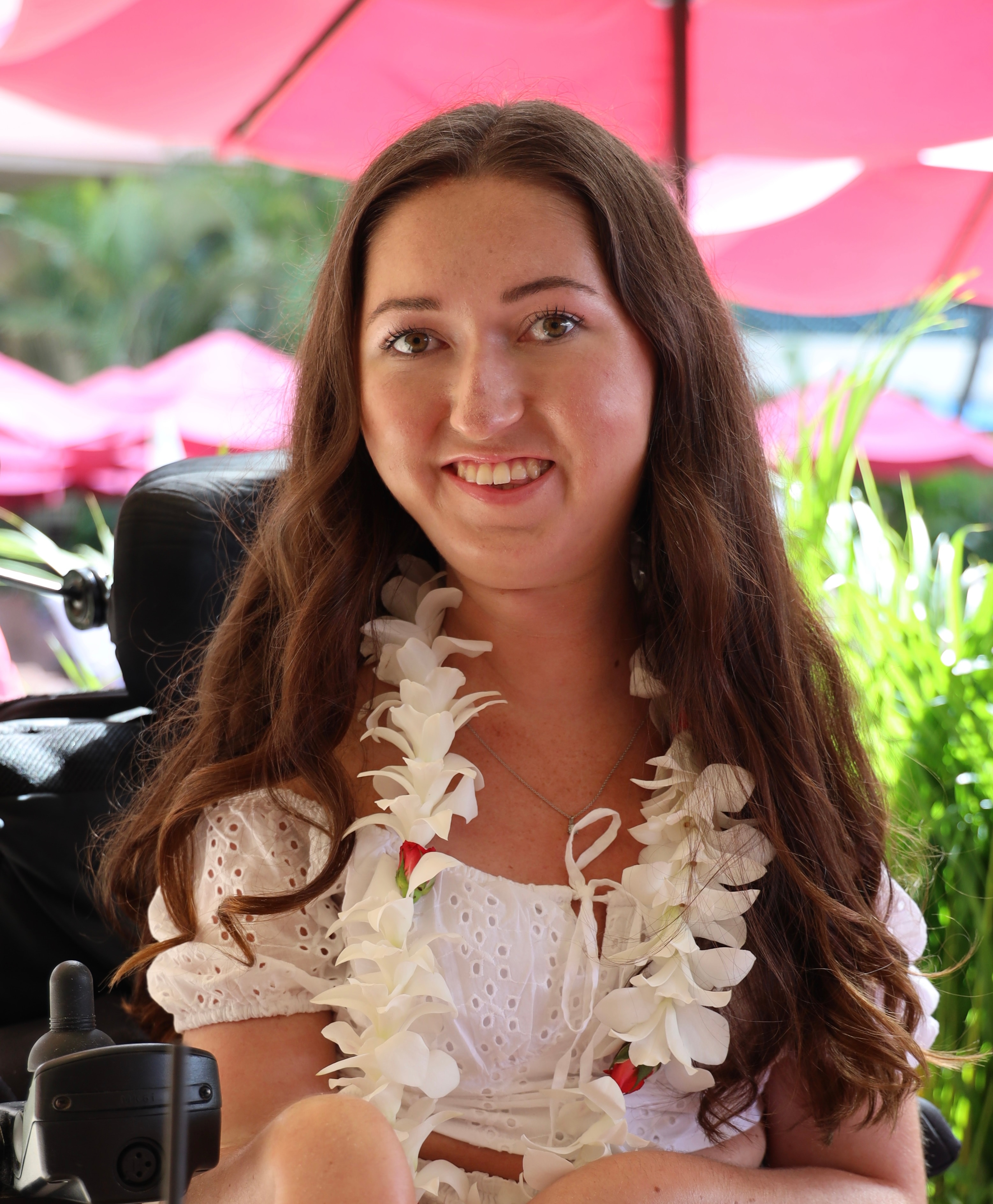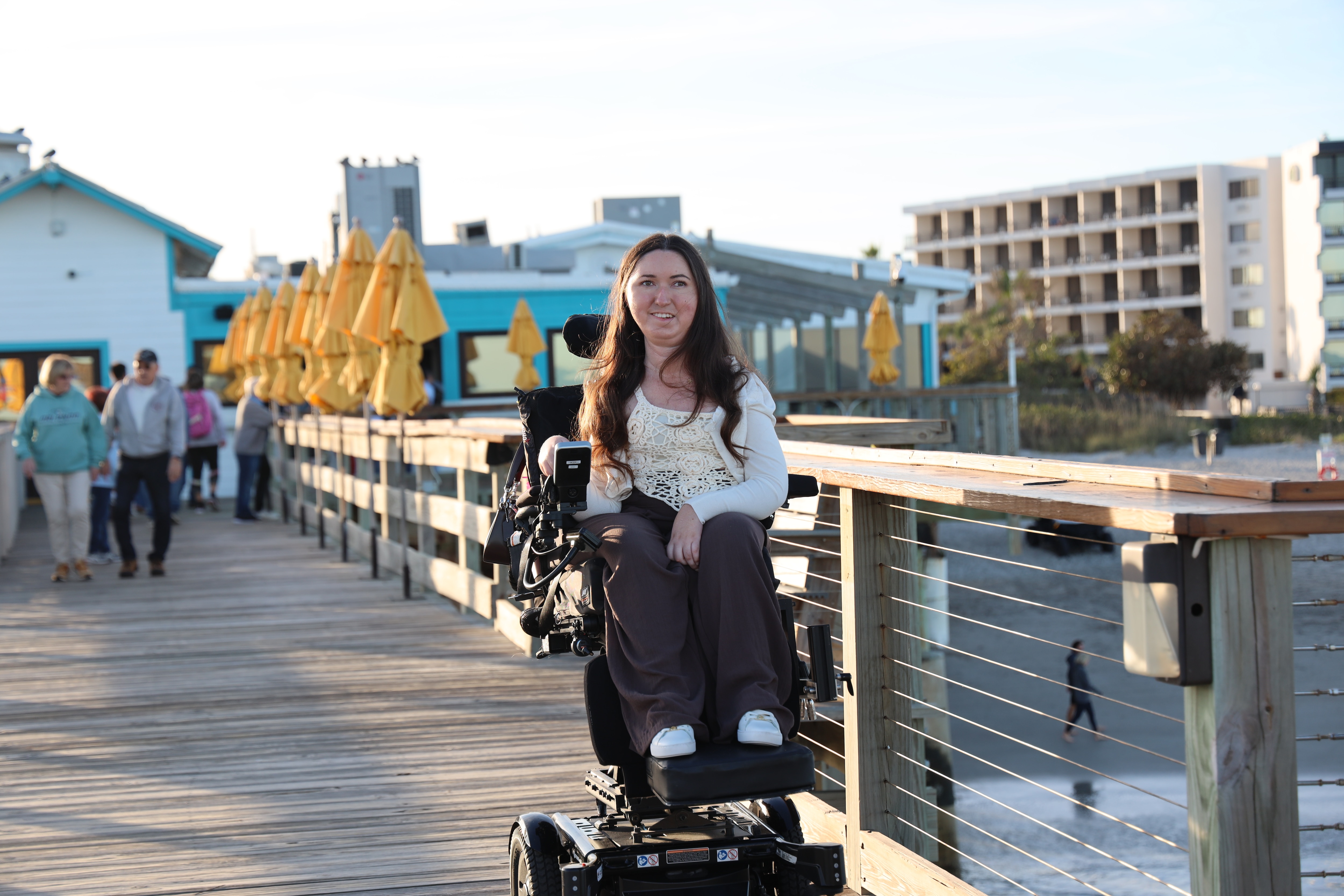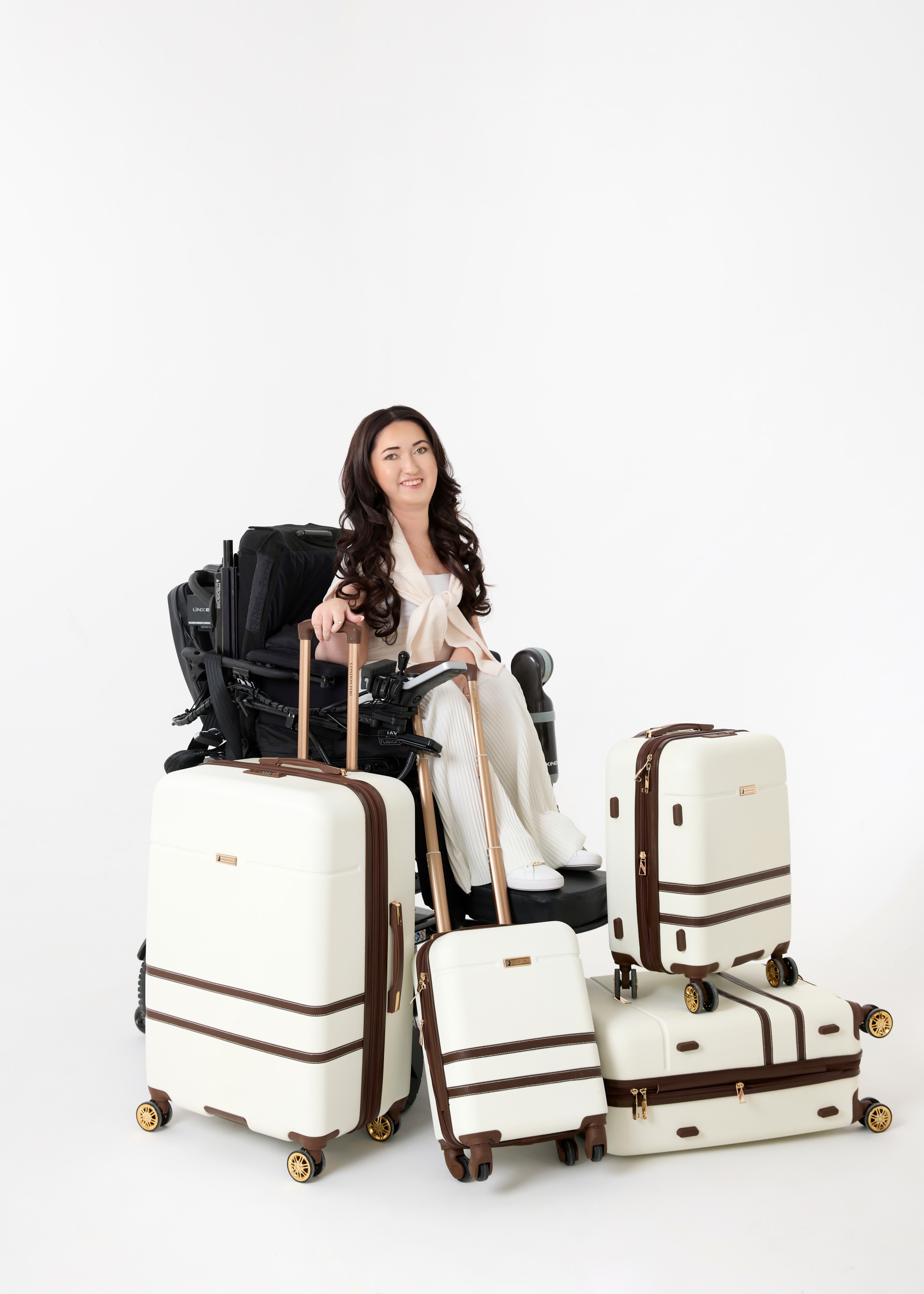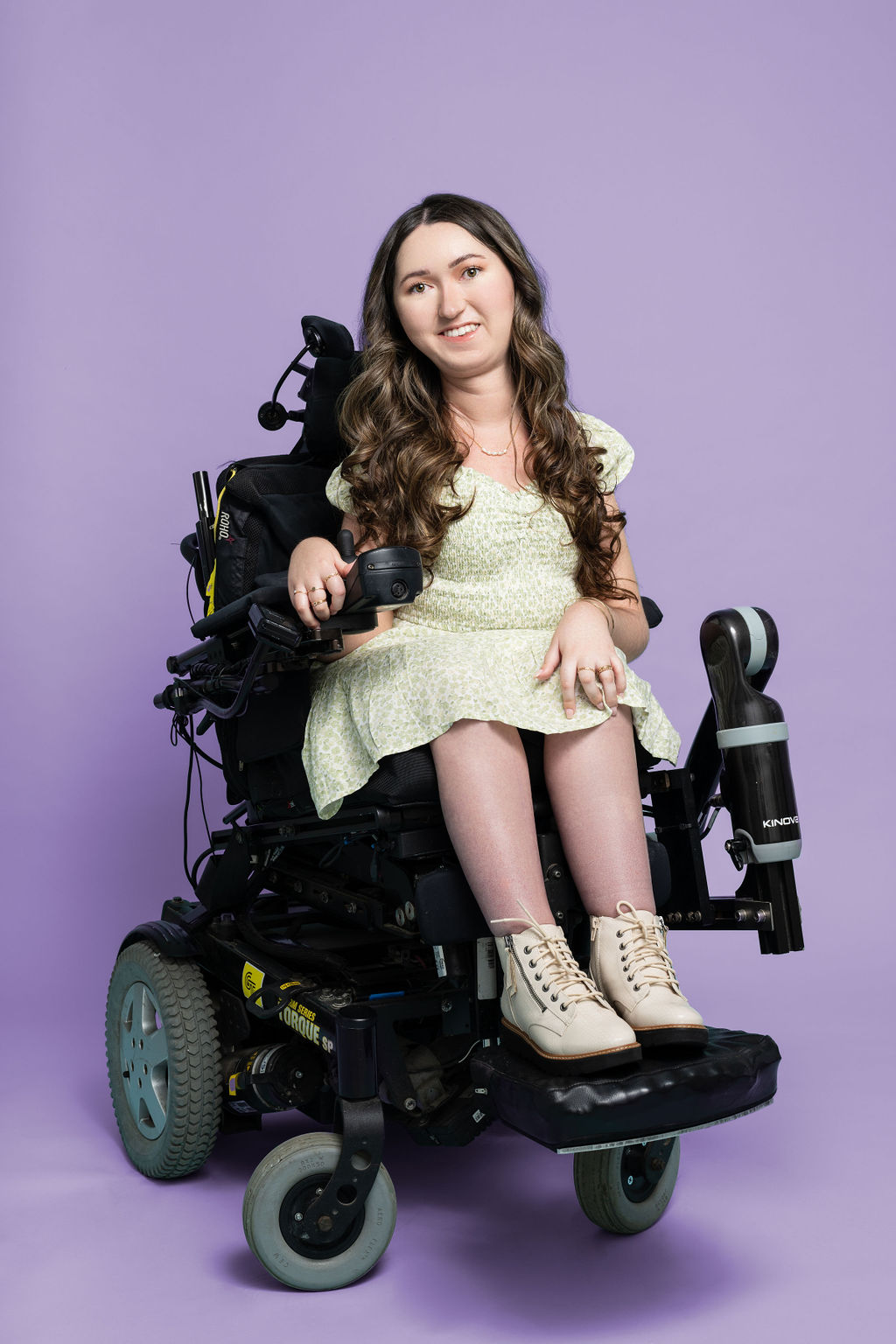Tori received compensation from Coloplast to provide this information. Each person’s situation is unique so your experience may not be the same.
My name is Tori, I’m in my late 20s and based just outside of Toronto, Ontario. I’m a content creator who loves sharing my life and adventures as a wheelchair user through my blog and social media.

Bathroom anxiety used to be a very real thing for me.
I have a neuromuscular condition called Spinal Muscular Atrophy, which means I rely on others to be my arms and legs for virtually every single task.
Getting up in the morning.
Brushing my teeth.
Preparing and taking all of my meals.
Showering.
And the biggest one of all (you guessed it) — going to the bathroom.

Before I had a catheter, using the bathroom was only really possible in the comfort of my own home. I can’t transfer myself at all, so I rely on a hoyer lift or 1–2 strong people who are able to lift me up, pull down my pants, and transfer me onto a commode — a specially designed chair that goes over the toilet and supports me in the same way my wheelchair does, with a headrest, backrest, footplates, and side supports to keep me steady.
Now, if you think about a public bathroom, you can probably imagine how difficult (a.k.a. impossible) that would be.
On some days, if I really couldn’t hold it, my mom and sister would squish themselves into a tiny stall with me and try to lift and position me on the toilet — all while supporting my floppy head and then trying to get me dressed again. Looking back, it kind of feels like a weird circus act — full of twists and turns and me yelling “Watch my feet!! You’re hurting me!!” But at the time, it was just exhausting. What should’ve been a basic bodily function became an overwhelming and stressful ordeal.
That anxiety only got worse as I got older and the logistics became harder.

In my teen years, I started dehydrating myself without even realizing it. I’d survive on just a couple of sips of water a day, not because I wanted to, but because it was the only way I could function outside the house without worrying about where or how I’d pee. I knew it wasn’t healthy, but it felt like my only option.
I remember asking all of my doctors for solutions. Yes, I had a lot of accessibility barriers and health concerns, but going to the bathroom was always the biggest challenge of all. I was a patient at one of the best pediatric hospitals in Canada, and yet year after year, their only suggestion was, “Why don’t you just wear diapers?”
There had to be a better way. Sitting in soiled undergarments all day felt uncomfortable and undignified, and came with all sorts of health risks if they weren’t changed quickly enough.
Everything changed when one of my best friends — who’s a paraplegic — told me about a surgery she was getting called a Mitrofanoff. It creates a small channel from the bladder to the belly button, allowing someone to catheterize directly from there. No need to transfer to a toilet. No pulling pants down. Just complete privacy and independence.
I was amazed. Is this what I’ve been looking for the whole time? Could I really go to the bathroom without ever having to leave my wheelchair?
I booked an appointment with a urologist, and within a year, I had the surgery. Overnight, the most disabling part of my daily routine disappeared.
Suddenly, I could spend the entire day away from home. I could go out for dinner. Attend concerts. Hang out with friends — without my parents tagging along, just in case I had to pee.” I truly felt like the world had opened up to me for the first time.
After surgery, I tried a few different catheter brands to figure out what would work best for me. I was looking for something with good usability, especially since I was always on the go with my newfound freedom. I eventually found that Coloplast was the best fit. Specifically, I found that the SpeediCath Compact Set was a huge game-changer for me because it’s discreet, pre-lubricated and comes with a bag already attached. That means I don’t have to carry a separate urine bottle or search for a toilet — I can just throw it in my purse and take it with me wherever I go.
Now, in my late 20s, I’ve been a catheter user for nearly a decade. And using SpeediCath has truly been such a life-changing part of this journey.
Travel has become a huge part of my life, both personally and professionally. I run a blog and social media channels where I share accessible travel guides and itineraries for other wheelchair users. I’ve had the opportunity to speak at conferences around the world and use my platform to advocate for accessibility — and none of that would’ve been possible without the freedom and confidence catheterization has given me.

Because I use catheters, I’m no longer stuck at home. I can pee on a plane, in the van on long road trips, or even in places where “accessible bathrooms” are more of a suggestion than a reality.
My catheter journey didn’t just change how I go to the bathroom — it changed how I live my life. It gave me autonomy, dignity, and the ability to say yes to things I used to say no to.
I used to think I’d never have true independence. Now I know that with the right tools and support, life in a wheelchair doesn’t have to be limiting — it can be full of possibility.
Follow Tori on Instagram @torihunter.blog!

